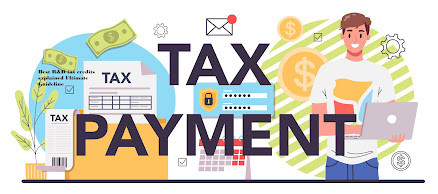R&D tax credits explained
Rewarding development and fuelling growth, R&D tax credits have the power to transform your business.
What are R&D tax credits?
Research and development (R&D) tax credits are a government impetus designed to reward UK organizations for putting resources into advancement. They are a significant source of money for organizations to put resources into accelerating their R&D, hiring new staff, and eventually growing.
How do R&D tax credits work?
Organizations that spend cash developing new products, processes, or services; or improving existing ones, are qualified for R&D tax relief. On the off chance that you're spending cash on your development, you can make an R&D tax credit guarantee to receive either a money installment and/or a Corporation Tax reduction. The extension for identifying R&D is colossal - truth be told, it exists in every single sector. And on the off chance that you're making a case for the first time, you can ordinarily guarantee R&D tax relief for your last two completed bookkeeping periods.
Is my business qualified for R&D tax credits?
- To profit from R&D tax motivating forces, you should:
- Be a limited organization in the UK that is dependent upon Corporation Tax.
- Have carried out qualifying research and development exercises.
- Have burned through cash on these projects.
Who qualifies for R&D tax credits?
R&D can happen in any sector. It occurs in everything from cheddar making to synthetic engineering, manufacturing, and construction to renewables.
What counts as R&D?
The government's R&D criteria are purposefully broad. Whatever size or sector, if your organization is facing a challenge by endeavoring to 'resolve logical or technological uncertainties' then you might be carrying out a qualifying movement. This could include:
If you're not sure assuming your project is conceivable, or you don't know how to accomplish it in practice, you could be resolving technological uncertainties and carrying out qualifying R&D.
Inside the government's accepted research and development definition, R&D mustn't have been fruitful to qualify. Further detail is accessible in our KnowledgeBank article: How do I be aware assuming that I'm carrying out qualifying R&D?
What expenses meet all requirements for R&D tax credits?
Staff, including salaries, employer's NIC, annuity contributions, and reimbursed costs.
Subcontractors and freelancers. Materials and consumables including intensity, light, and power are used up or transformed by the R&D process.
A few sorts of software.
Installments to the subjects of clinical trials.
What R&D tax credit motivator is right for my business?
What motivating force you use to make an R&D tax credit guarantee will largely depend on whether you are an SME or a large organization.
SME:
Fewer than 500 staff and either not more than €100 million turnover or €86 million gross resources. Most organizations, including start-ups, fall into this category.
Large organization:
500 staff or more and either more than €100 million turnover or €86 million gross resources.
On the off chance that you are classed as an SME for R&D tax credit purposes, your subsequent stage will be to make a case through the SME R&D tax motivation. And on the off chance that you are a large organization, use the Research and Development Expenditure Credit (RDEC).
However, there are a couple of factors, for example, grants and subcontracting that can restrict an SME from getting to the SME motivation. This implies you might need to make a case through RDEC - or using the two motivators.
We assist SMEs across all sectors with receiving a large number of pounds every month to re-put once more into their organizations. It is feasible to utilize R&D tax credits and grant funding together by utilizing the two motivations to ensure the most extreme worth. ForrestBrown likewise offers a range of services for large organizations, including RDEC guarantee preparation.
How much is an R&D tax credit guarantee worth?
R&D tax credits are calculated based on your R&D spending. To make an R&D credit estimation, you need to identify qualifying expenditure and upgrade it by the relevant rate (see beneath). This produces your 'enhanced expenditure'.
The point when you deduct your enhanced expenditure from your taxable profits or add it to your misfortune, it will result in:
a Corporation Tax reduction on the off chance that you are profit-production.
a money credit on the off chance that you are misfortune-making.
or a mix of the two.
R&D tax credit rates
SMEs are ready to guarantee up to 33p for every £1 spent on qualifying R&D exercises. The average case made by SMEs in the UK is £57,228 (2018-19).
Large organizations are ready to guarantee up to 11p for every £1 spent on qualifying R&D exercises. The average large organization (RDEC) guarantee in the UK is £632,931 (2018-19).
The R&D tax credit rates in 2020 are shown in the table inverse.
The advantages of R&D tax credits
As a form of development funding, R&D tax credits can transform your business. At ForrestBrown, we are enthusiastic about assisting creative organizations with realizing the maximum capacity of R&D tax impetuses so they can grow. This is because the advantages are wide-reaching.
The government benefits from increased productivity which is good information for UK organizations, and good news for the economy. It can likewise lead to development that can impact positive change on a worldwide scale.





.jpg)
0 Comments
please do not enter any spam link in the comment box.